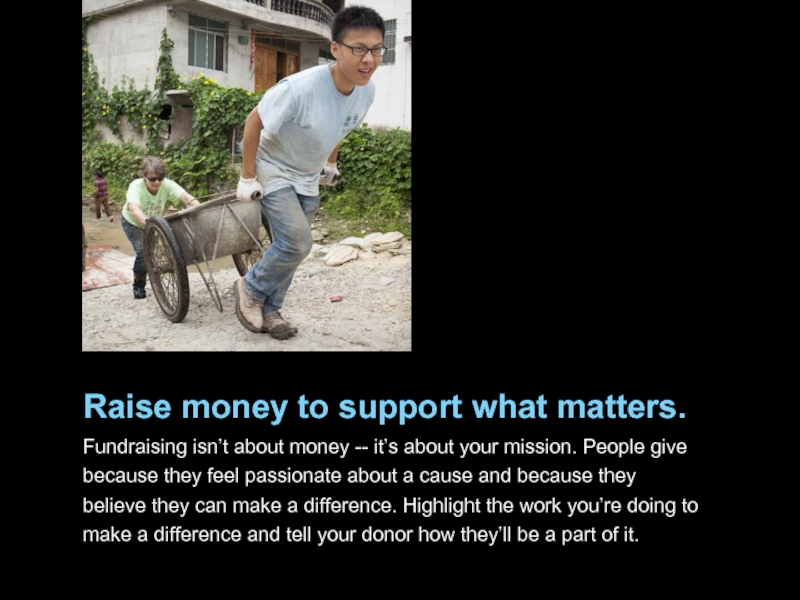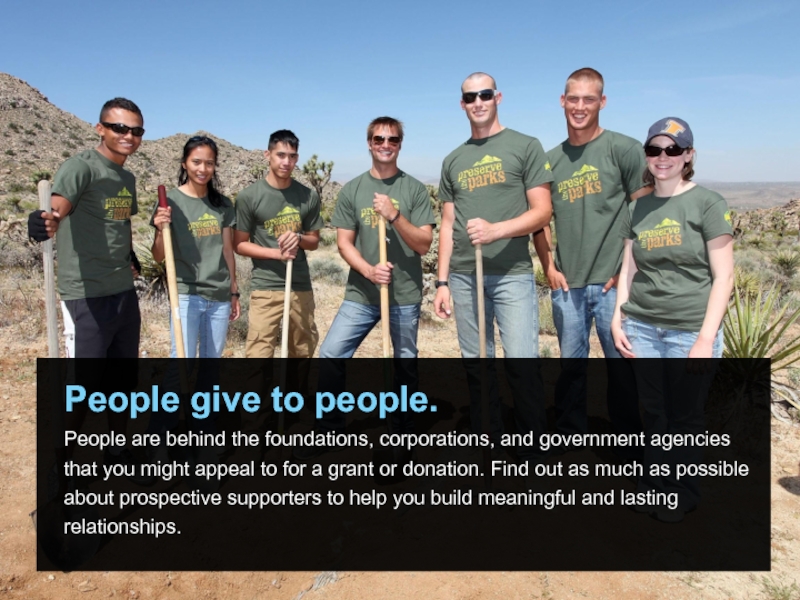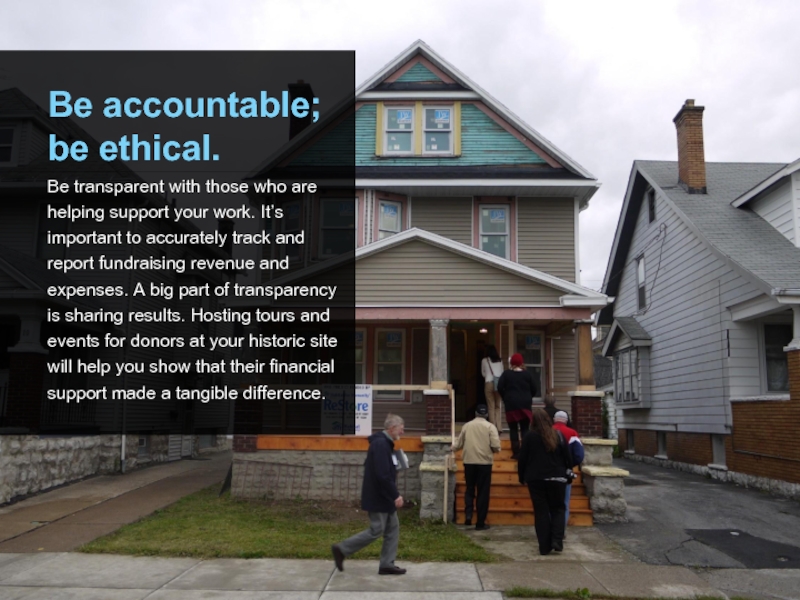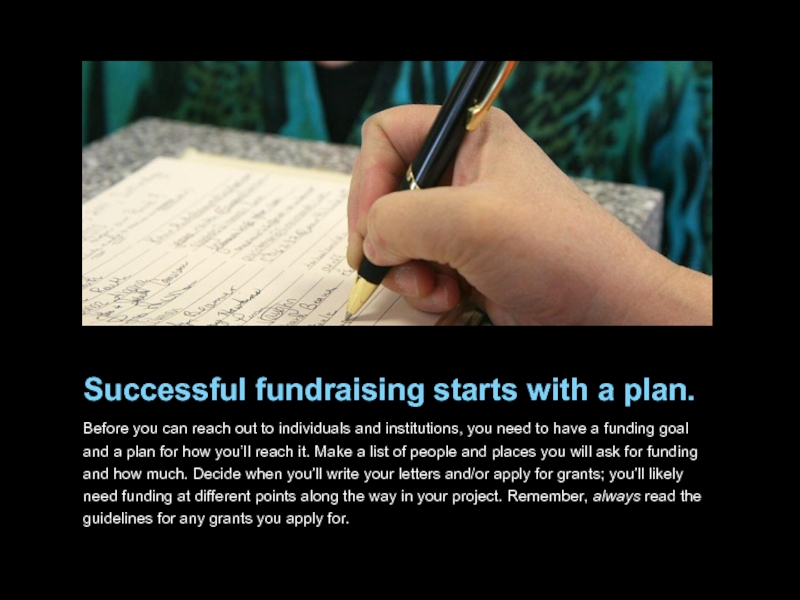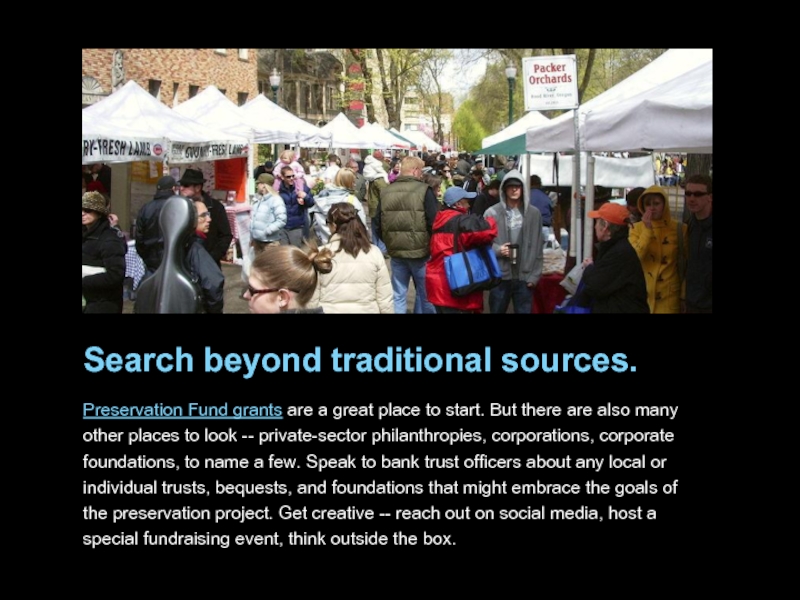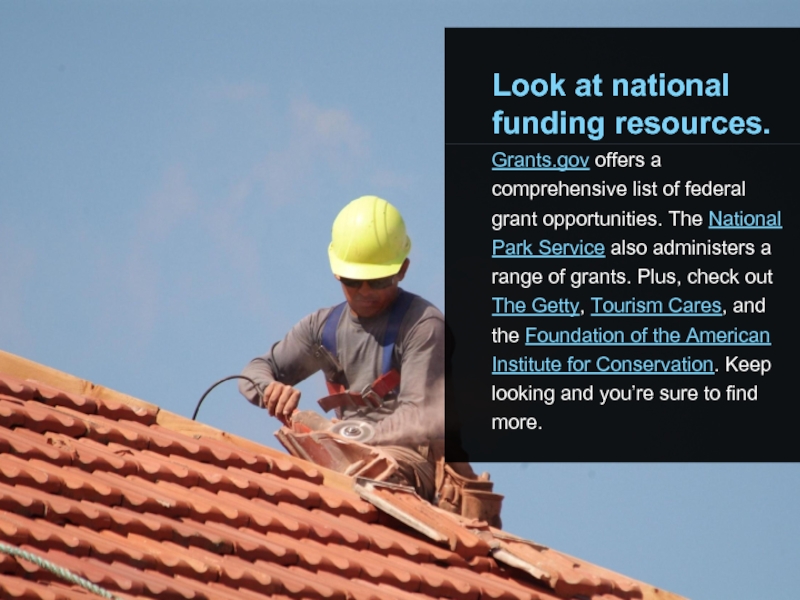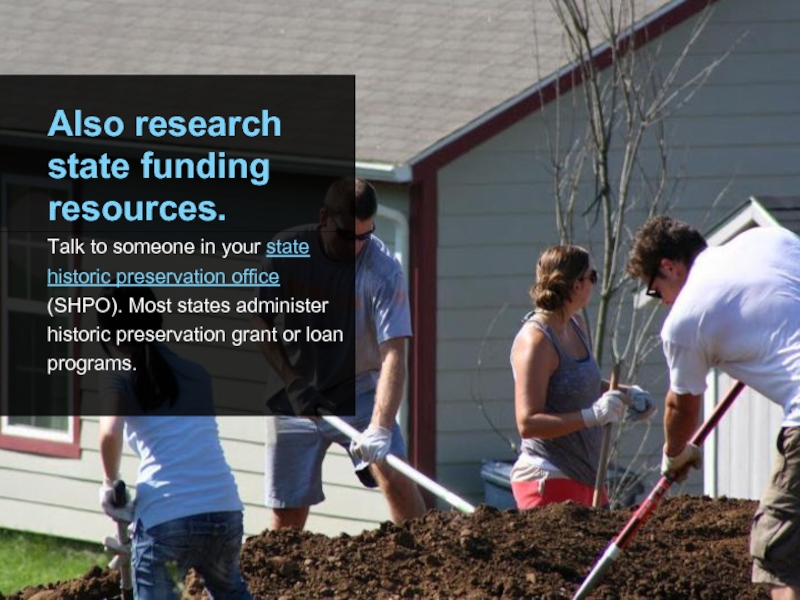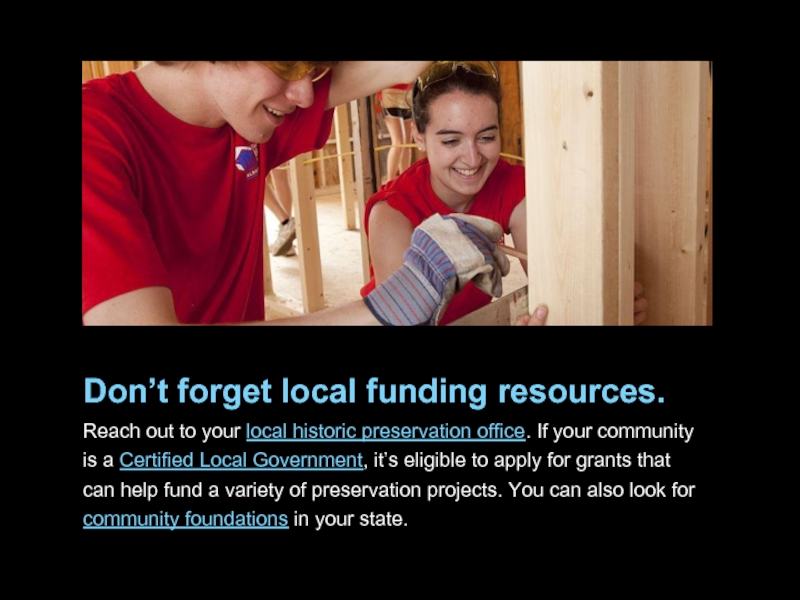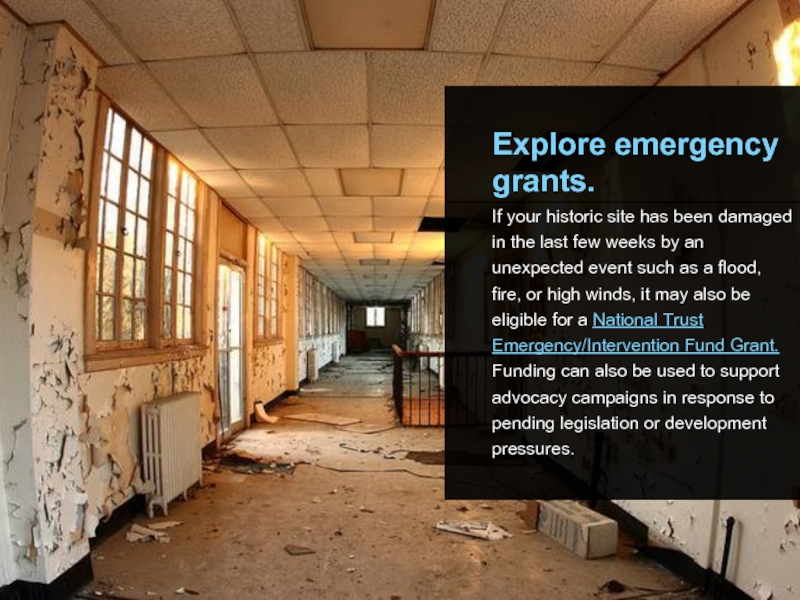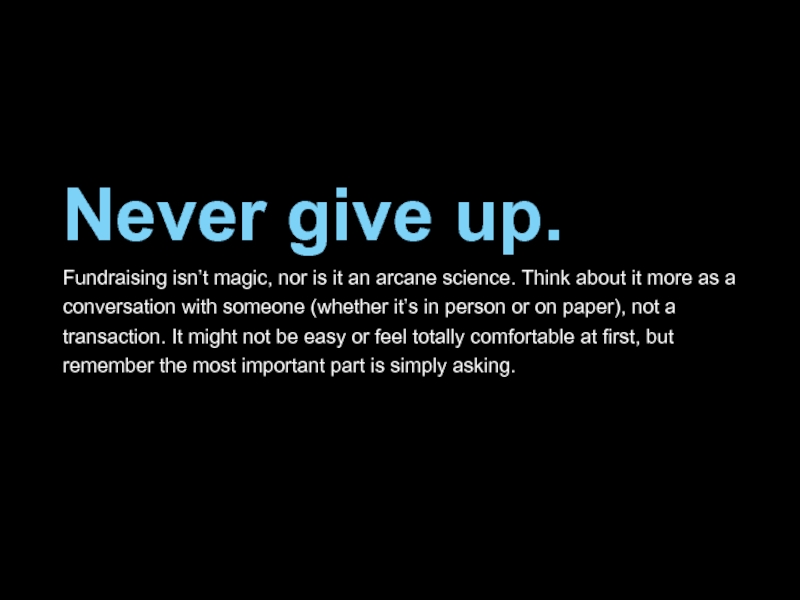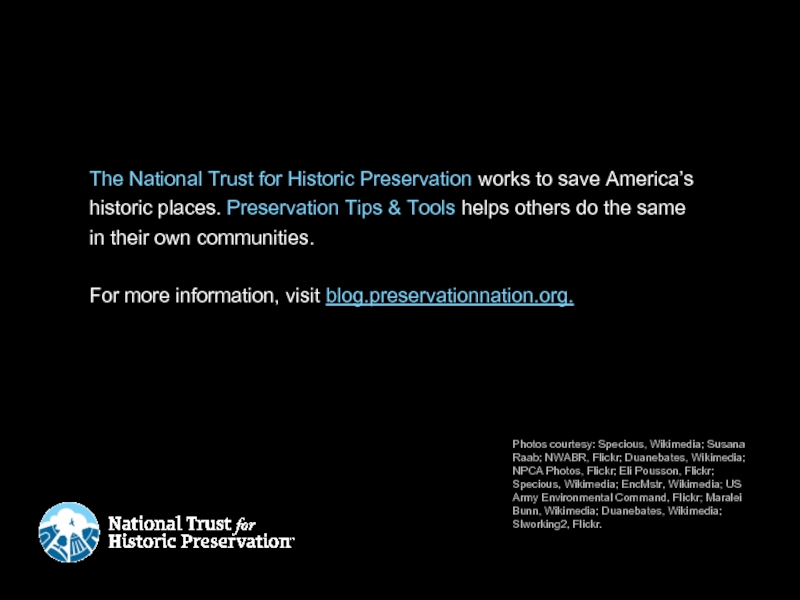- Главная
- Разное
- Дизайн
- Бизнес и предпринимательство
- Аналитика
- Образование
- Развлечения
- Красота и здоровье
- Финансы
- Государство
- Путешествия
- Спорт
- Недвижимость
- Армия
- Графика
- Культурология
- Еда и кулинария
- Лингвистика
- Английский язык
- Астрономия
- Алгебра
- Биология
- География
- Детские презентации
- Информатика
- История
- Литература
- Маркетинг
- Математика
- Медицина
- Менеджмент
- Музыка
- МХК
- Немецкий язык
- ОБЖ
- Обществознание
- Окружающий мир
- Педагогика
- Русский язык
- Технология
- Физика
- Философия
- Химия
- Шаблоны, картинки для презентаций
- Экология
- Экономика
- Юриспруденция
Fundraising Basics презентация
Содержание
- 1. Fundraising Basics
- 2. Raise money to support what matters. Fundraising
- 3. People give to people. People are behind
- 4. Be accountable; be ethical. Be transparent with
- 5. Successful fundraising starts with a plan. Before
- 6. Search beyond traditional sources. Preservation Fund grants
- 7. Look at national funding resources. Grants.gov offers
- 8. Also research state funding resources. Talk to
- 9. Don’t forget local funding resources. Reach out
- 10. Explore emergency grants. If your historic site
- 11. Never give up. Fundraising isn’t magic, nor
- 12. Photos courtesy: Specious, Wikimedia; Susana Raab; NWABR,
Слайд 2Raise money to support what matters.
Fundraising isn’t about money -- it’s
about your mission. People give because they feel passionate about a cause and because they believe they can make a difference. Highlight the work you’re doing to make a difference and tell your donor how they’ll be a part of it.
Слайд 3People give to people.
People are behind the foundations, corporations, and government
agencies that you might appeal to for a grant or donation. Find out as much as possible about prospective supporters to help you build meaningful and lasting relationships.
Слайд 4Be accountable; be ethical.
Be transparent with those who are helping support
your work. It’s important to accurately track and report fundraising revenue and expenses. A big part of transparency is sharing results. Hosting tours and events for donors at your historic site will help you show that their financial support made a tangible difference.
Слайд 5Successful fundraising starts with a plan.
Before you can reach out to
individuals and institutions, you need to have a funding goal and a plan for how you’ll reach it. Make a list of people and places you will ask for funding and how much. Decide when you’ll write your letters and/or apply for grants; you’ll likely need funding at different points along the way in your project. Remember, always read the guidelines for any grants you apply for.
Слайд 6Search beyond traditional sources.
Preservation Fund grants are a great place to
start. But there are also many other places to look -- private-sector philanthropies, corporations, corporate foundations, to name a few. Speak to bank trust officers about any local or individual trusts, bequests, and foundations that might embrace the goals of the preservation project. Get creative -- reach out on social media, host a special fundraising event, think outside the box.
Слайд 7Look at national funding resources.
Grants.gov offers a comprehensive list of federal
grant opportunities. The National Park Service also administers a range of grants. Plus, check out The Getty, Tourism Cares, and the Foundation of the American Institute for Conservation. Keep looking and you’re sure to find more.
Слайд 8Also research state funding resources.
Talk to someone in your state historic
preservation office (SHPO). Most states administer historic preservation grant or loan programs.
Слайд 9Don’t forget local funding resources.
Reach out to your local historic preservation
office. If your community is a Certified Local Government, it’s eligible to apply for grants that can help fund a variety of preservation projects. You can also look for community foundations in your state.
Слайд 10Explore emergency grants.
If your historic site has been damaged in the
last few weeks by an unexpected event such as a flood, fire, or high winds, it may also be eligible for a National Trust Emergency/Intervention Fund Grant. Funding can also be used to support advocacy campaigns in response to pending legislation or development pressures.
Слайд 11Never give up.
Fundraising isn’t magic, nor is it an arcane science.
Think about it more as a conversation with someone (whether it’s in person or on paper), not a transaction. It might not be easy or feel totally comfortable at first, but remember the most important part is simply asking.
Слайд 12Photos courtesy: Specious, Wikimedia; Susana Raab; NWABR, Flickr; Duanebates, Wikimedia; NPCA
Photos, Flickr; Eli Pousson, Flickr; Specious, Wikimedia; EncMstr, Wikimedia; US Army Environmental Command, Flickr; Maralei Bunn, Wikimedia; Duanebates, Wikimedia; Slworking2, Flickr.

